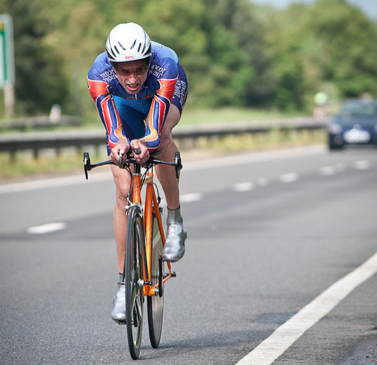It was the British Cycling Team which popularised the notion of ‘marginal gains’. The idea is to strive for the even the tiniest improvement in every aspect of cycling. The idea is that if you add up all the ‘marginal gains’ this is enough to give a winning advantage. Dave Brailsford calls it the ‘aggregation of marginal gains’. When the margin of victory can be so close in professional cycling, these ‘marginal gains’ arguably helped Britain to become one of the most successful Olympic teams.
Marginal gains is turning the sport into a science and looking at it from every possible angle. The amateur cyclist may be tempted to think this is just a hobby and something I enjoy, why should I worry about marginal gains? This used to be my attitude for quiet a long time. Just train hard, turn up and enjoy the ride. But, recently I’ve become much more interested in seeking marginal gains and trying to get everything right, rather than just using educated (or uneducated) guesswork.
This season I have been focusing on aerodynamics and nutrition.
Examples of Marginal Gains in Aerodynamics
- Remove clunky speedometer, replaced with small stopwatch.
- Taping wires to bike to reduce air gap.
- Aero gloves / aero shoes.
- Taping up holes of
- Polishing bike to remove any dirt smudges which make airflow less smooth.
- Holding bike at end of aerobars to make sure nothing is unnecessarily sticking in wind.
- Bring arms closer together.
- More aerodynamics
Nutrition
- Sometimes in morning I used to have a drink of coffee, 4 hours before race. But, this isn’t good as caffeine gives a stimulative response which wears off leaving you tired 3-4 hours later. No caffeine in morning of race. If you were really strict you would have no caffeine for three weeks prior to race.
- Low GI food 3 hours before. Simple things like switching from white bread to brown bread, give a lower GI Index. The benefit of low GI Foods is that there will be a steadier release of sugar throughout the blood stream.
- If you eat high GI foods an hour or so before a race, your blood sugar is raised triggering a release of insulin to store the excess glucose. This can actually make you tired and weary before start.
- The time to take high GI food (e.g. energy bars) is when you have started to warm up or just prior to race. Then the release of glucose will be used by the body and there will not be the same release of insulin.
- Getting nutrition right can actually be a big marginal gain. Or to put it another way, if you get it wrong, it can cost you a lot.
More Potential Marginal Gains
- Wind Tunnel testing to find most aerodynamic position (hopefully will be getting test in July)
- Top of the Range British Cycling Skinsuit. Benefit from their research into most aerodynamic skinsuit.
Marginal Gains – David Brailsford at Team Sky
Right Balance for Amateur’s and Marginal Gains
For an amateur, the watchword could be the ‘aggregation of best value marginal gains.’
You can spend £5,000 on a top of the range bike and only go a little faster. You can spend a bit of time to learn the optimum nutrition intake, and it can save yourself minutes (and doesn’t cost you anything)
Marginal gains will probably appeal most to those doing time trialling. If you’re going to spend 10 hours training a week, why not look for simple and effective ways to become more aerodynamic. Some of the best are not necessarily expensive.
Related


Good info. Thanks for the article. Are you noticing improvement because of these marginal gains? Or is it something that’s hard to judge?